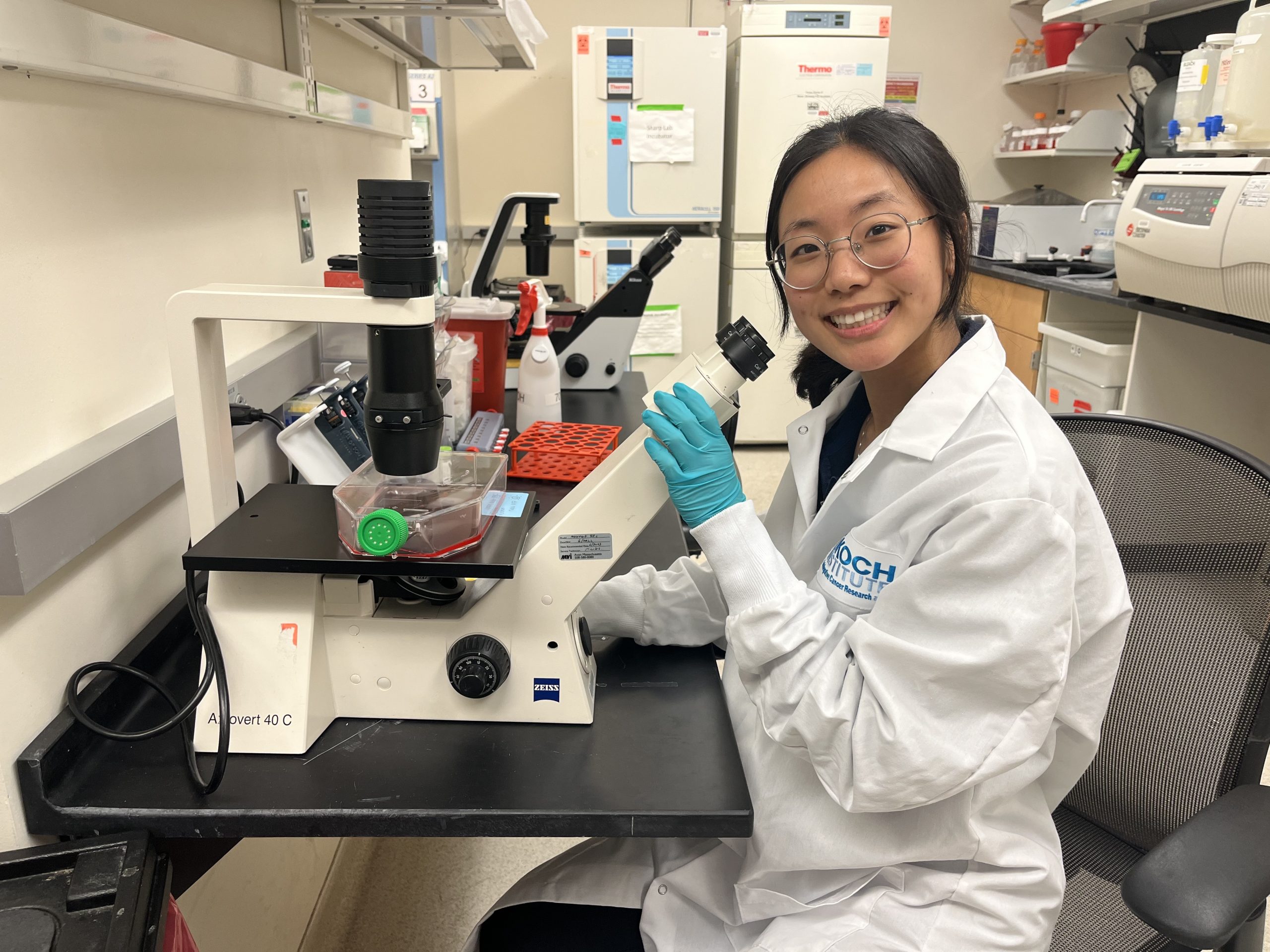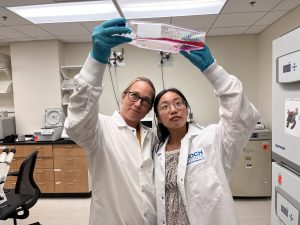
All It takes to titer: discovering a love of troubleshooting at MIT
Noah Daly | Department of Biology
September 25, 2024
BSG-MSRP-Bio student Yeongseo Son breathed new life into her love of science over the summer in the Spranger Lab studying immune responses in the lung in the Department of Biology at MIT.
When Yeongseo Son was initially invited to join the Spranger Lab as part of the Bernard S. and Sophie G. Gould MIT Research Program in Biology, she thought the email was spam. Having grown up in the South for most of her life, she had never pictured herself at MIT.
Back home at the University of Georgia, Son studies neutrophils, a kind of innate immune cell that serves as the body’s first line of defense against foreign pathogens. After taking a graduate-level course on immunology last semester, Son realized she needed to increase her basic understanding of the broad discipline.
“I knew that coming to work with Professor Spranger would give me a chance to work on cancer immunology and T cell biology, two really cool and important fields I haven’t been exposed to,” Son says.
It took several attempts from the Senior Lecturer and BSG-MSRP-Bio program coordinator Mandana Sassanfar to reach her before Son accepted.
“Before I arrived, I was worried it would be too intense or that I wouldn’t fit in,” Son says. “I couldn’t have been more wrong: yes, the work is challenging, but everyone is here because they truly love science.”
Vexing Viruses
In the lab of Stefani Spranger, Associate Professor in the Department of Biology and Intramural Faculty of the Koch Institute for Integrative Cancer Research, Son was first tasked with a seemingly simple second project: growing a new strain of influenza to infect mice that had recently recovered from another strain.
This quest involved multiple steps, such as culturing cells, infecting the cells with the virus, and measuring how lethal it is to host cells, working with a strain that her lab hadn’t used before.
To test the strength of the virus, the virus is mixed with host cells in order to infect them. Then the host cells are placed on a layer of agar, a gelatinous substance that provides nutrients for the host cells. When a virus-infected cell dies, it creates a hole in the layer of cells called a plaque. The number of plaques is recorded to determine the virus’s titer, or frequency.
Son excitedly executed her plaque assay after breezing through the first two steps. The next day, to her surprise and disappointment, all her cells — including the negative control — had died.
“The first time it failed, I was crushed because I had written the protocol over and over,” Son says.
That initial disappointment, however, turned into excitement to solve the problem. She worked closely with her mentor, Postdoc Taylor Heim, who helped motivate her to keep trying to figure out what had gone wrong.
Son spent weeks designing a process to effectively titer the virus. She laid out a plan of action to assess what could be toxic to the cells and systematically tested each component of the protocol that could affect the growth of her strain of influenza.
It took Son four attempts before she had a eureka moment: the success of her cell cultures depended on the precise measurement of just one reagent.
Too much of the reagent meant the cells would all die on arrival, but just a little bit, and they would survive. It took Son three more attempts — seven experiments in total — to fully ensure the success of the assay.
Throughout this process, and despite her many failures, Son realized she finds troubleshooting very enjoyable. Each failure was unique and crucial for her eventual success.
“I’m making a difference — I’m figuring something out that can really help with future experiments,” Son says. “That moment of success is why I gained such confidence in being a scientist.”

Lighting Up the Lungs
In the Spranger Lab, Son’s other summer project focused on the respiratory system. She was examining a type of specialized cell called resident memory CD8+ T cells in the lungs and lymph nodes of mice infected with influenza. These specialized T cells gain a kind of memory of how to fight off a virus and remain in the lungs and lung-draining lymph node tissues long after the tissues have overcome the immune challenge of something like influenza.
Son’s postdoctoral student mentor Taylor Heim is especially interested in the potential of these cells for cancer immunotherapy.
To better understand how the resident memory T cell populations change over time, Son and Heim conducted a time-point experiment in which mice were studied at different points after being infected with influenza. They do this by injecting antibodies into the mouse’s bloodstream after infection, which mark any immune cells circulating in the blood, allowing the researchers to gauge if the cells are recruited to help fight a virus.
Son’s work this summer goes deeper, examining proteins known as cytokines that enable the immune system to combat germs or other substances that can harm an organism.
Son used a genetically modified mouse to track the production of interferon-gamma, IFN‐γ. IFN‐γ is a cytokine that plays a key role in regulating immune responses, often helping fight off infection and cancer. Son found evidence that resident memory T cells produce this cytokine in both the lungs and lung-draining lymph nodes.
The goal of this research is to one day use the information collected on resident memory CD8+ T cell populations and cytokine expression to help systematically target cancerous cells that appear in the body.
“Yeongseo has helped us pioneer a system to track how these cells move within tissues of living mice,” Spranger explains. “By using this approach, we will be able to understand how they are affecting cancer development and how cancer is affecting them, and that’s pretty exciting.”
Learning Outside the Lab
The BSG-MSRP-Bio program also gave Son near-constant access to faculty from across the biology department, both through extracurricular offerings such as dinner seminars and journal clubs as well as departmental retreats.
She’s also sat down with professors individually and heard more about their stories and research as part of her podcast Let’s Talk Chemistry. Nobel Laureate Phil Sharp, whose office is on the same floor as the Spranger Lab, joined the show after Son dropped by his office to introduce herself. Son learned more about his discoveries in RNA splicing and the behind-the-scenes details of his Nobel Prize ceremonies.
At MIT, Son has found a welcoming community of enthusiastic scientists working towards common goals, especially in her lab. Every day, members of the Spranger Lab actively seek each other out to have lunch together, and she feels right at home with them.
“I realized that yes, the people in this community are intensely passionate about their work, but they’re also multi-dimensional with a ton of different interests,” Son says. “One of the graduate students in my lab even gave me tennis lessons, and I’m already a better player because of it.”
As she returns to her studies in Georgia and begins the process of applying to graduate schools, Son is excited about her future in science. Armed with new knowledge, confidence, and community, she’s ready for whatever curveball her career in science will throw her next.
Want to know more about our BSG-MSRP-Bio Students? Read more testimonials and stories here.
